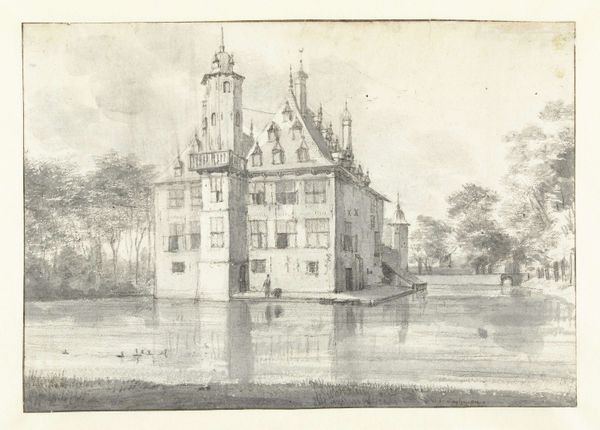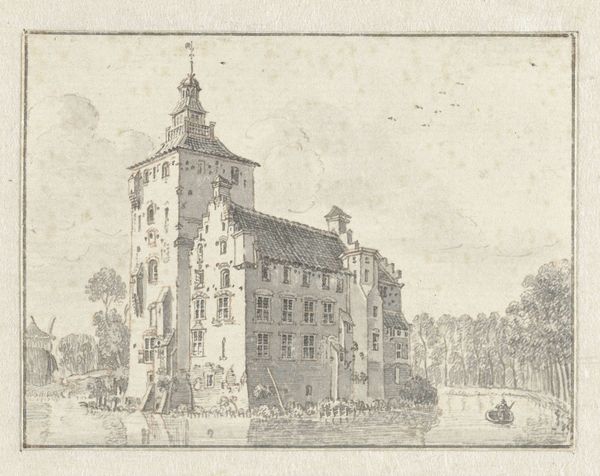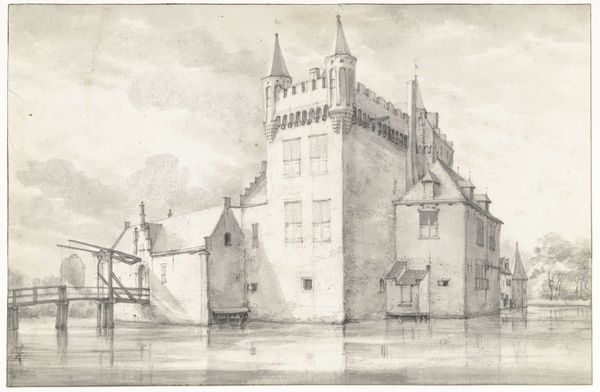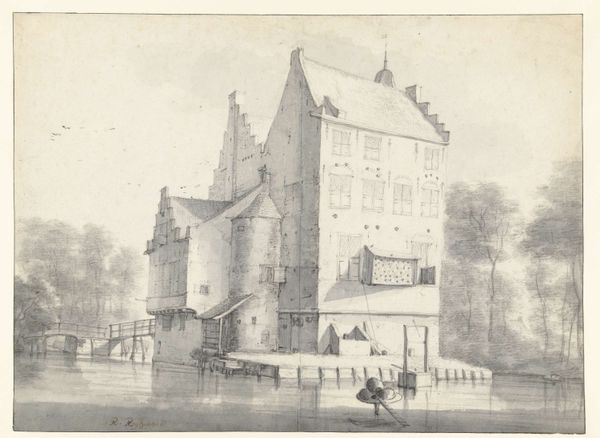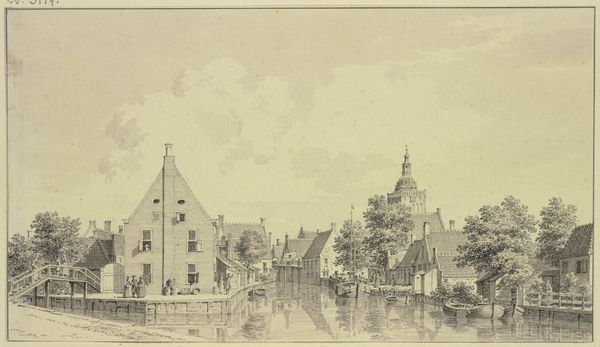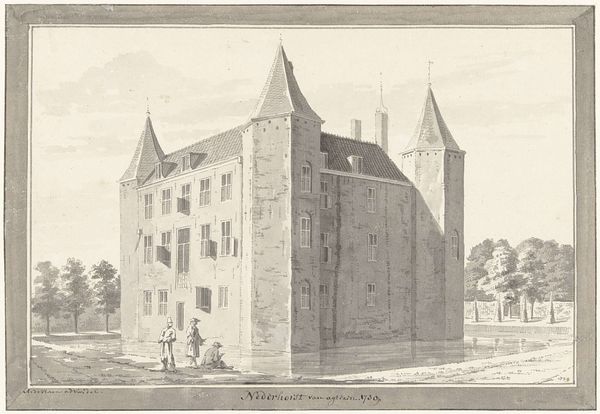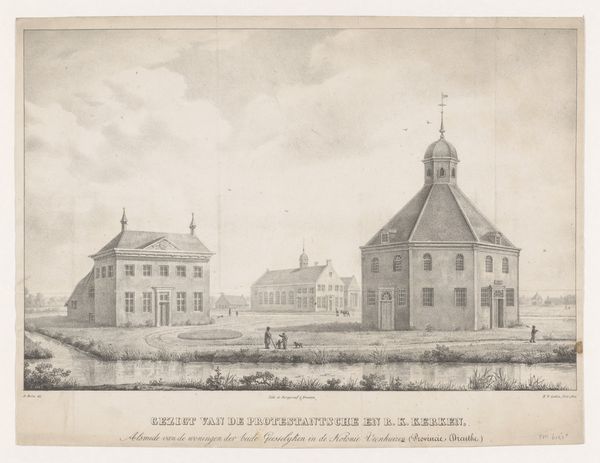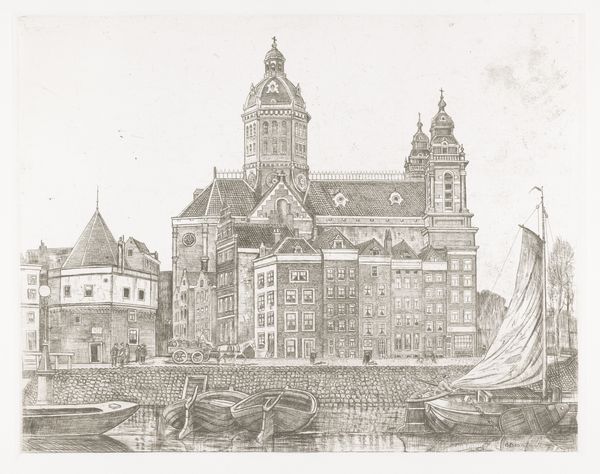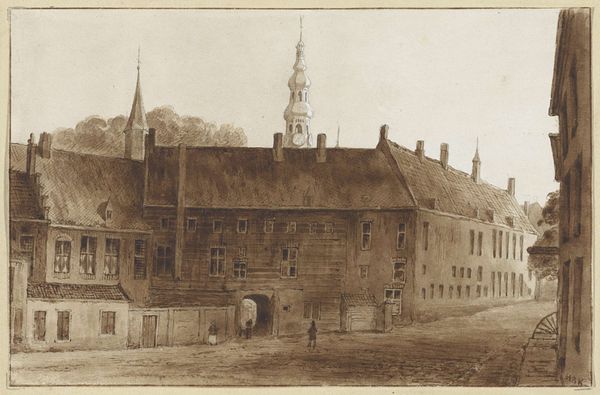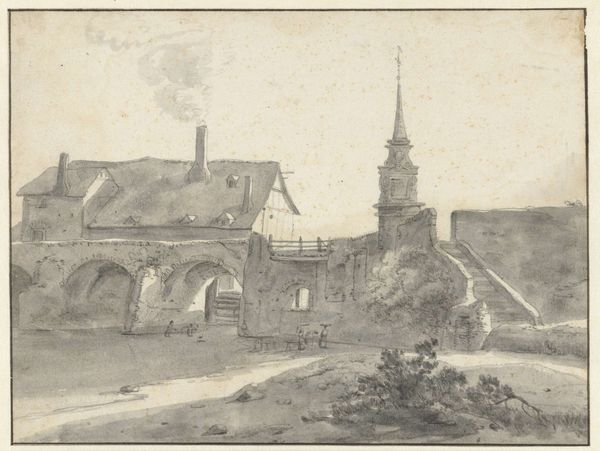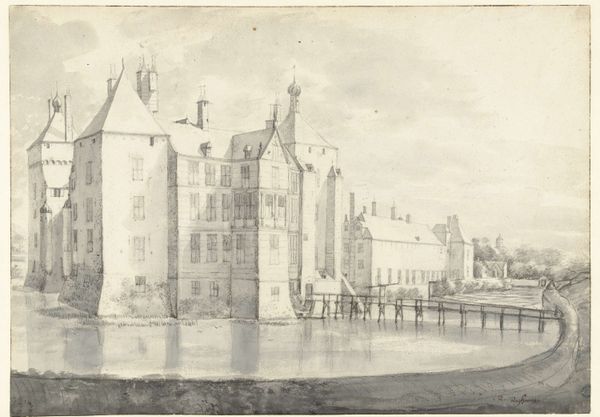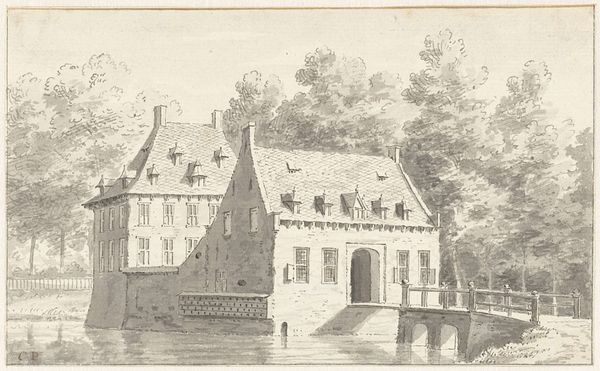
View of Huis te Werve or Klein-Matenes, Seen from the South c. 1646
0:00
0:00
drawing, paper, watercolor, ink, architecture
#
drawing
#
baroque
#
dutch-golden-age
#
landscape
#
paper
#
watercolor
#
ink
#
cityscape
#
watercolor
#
architecture
Dimensions: height 394 mm, width 518 mm
Copyright: Rijks Museum: Open Domain
Roelant Roghman made this drawing of Huis te Werve, or Klein-Matenes, sometime in the 17th century using pen and brown ink, and grey wash on paper. Looking closely, you'll notice the artist's hand in every aspect of the work. Roghman uses a layered wash technique to depict the chateau’s architectural features. The controlled application of ink conveys the textures of brick and stone. This requires not only technical skill, but also close observation of the building. Beyond technique, the drawing offers insight into Dutch society at this time. Country houses like this one were symbols of status, built and maintained with considerable labor. Yet, the drawing is intimate in scale. It’s a reminder that even the grandest structures are ultimately the result of human effort, made with materials extracted from the earth. Thinking about this interplay between artistic skill, material, and social context allows us to appreciate the drawing on a much deeper level. It challenges the notion that 'fine art' is somehow separate from the material world and the labor that shapes it.
Comments
No comments
Be the first to comment and join the conversation on the ultimate creative platform.
